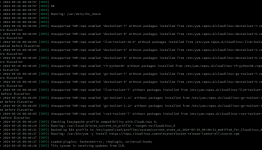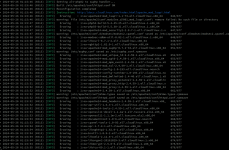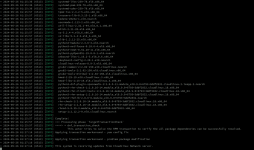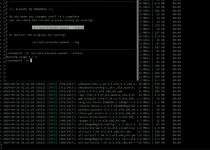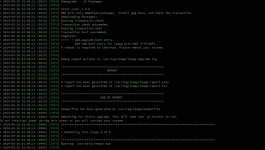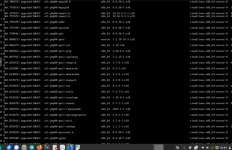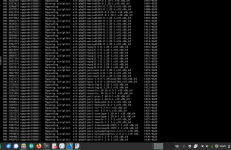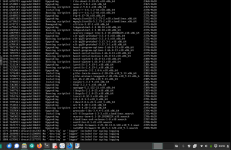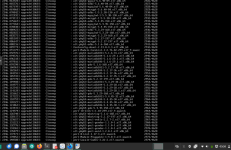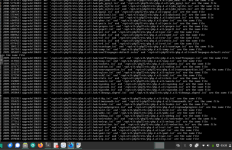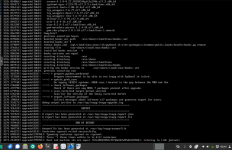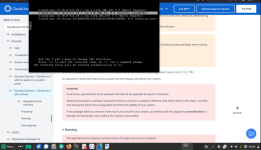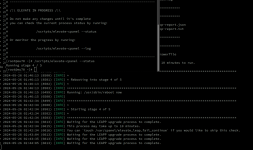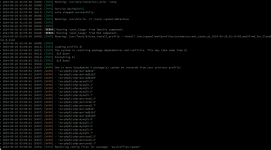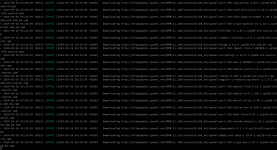Red Hat Enterprise Linux (RHEL), offers several advantages that make it a popular choice for businesses and organizations. RHEL is known for its stability. Red Hat provides long-term support for its releases, which includes security updates and bug fixes without major changes to the system, making it ideal for environments where uptime and reliability are critical. Long-term support, and enterprise-grade features of Red Hat Enterprise Linux (RHEL) are indeed significant reasons behind the creation of RHEL clones and why it is chosen 00 to be the main distros of the Hosting Indursty...
How ever main clients of the RedHat are Large Enterprises and Government bodies they usually buy certified servers and run on them for the entire lifetime (do amortizations) then throw them away and by the new one repeat the process. they are ok the performance remain the same trough the entire lifecycle of OS+Server
 https://www.redhat.com/en/success-stories
https://www.redhat.com/en/success-stories
We are different I recently did yabs benchmark on an old 2670 v2 to evaluate connectivity for location been used as backups it also runs geek bench6... 10 years ago such server will be considered pretty decent performance
But if we ran it like a RedHad customer with current day performance on geekbench6 single tread of 650 which is important for PHP last couple of years that CPU will be classified as unusable as 5 years old 3900x 3800 Ryzens has 1600 59XX has 2100 and new ones 7950 and EPYC 4004 are in 2800-3000 zone ...
So for a hosting provider to stay competitive we got to change hardware more frequently ... During the 00 periods and the 10 when Intel dominates the CPU market that is not that much of an issue as performance do not changed that much during several generations of CPUs especially for E3 family where 1245v2 performs not so differently from 1230 v6 which on the single thread benchmark (with in the 10%)
but now days jumps are bigger to workaround that I decide we will run on virtualized hardware we own hardware in one of our locations but we rent in others and that is even better as we can easily migrate to new one on even shorter cycle
and here starts the issues
Red Hat designed their linux for their paying clients needs the product lifecycle is that

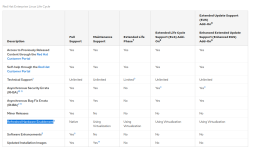
Native support is for the first 5 years of full support
I first notice the issue when in early 2020 Ryzen 3900 become modern with some hosting companies and we also got some I migrated some CL7 VMs to such hypervisor nodes and it booted with warning for unrecognized or unsupported cpu.... Well x86 has great backwards compatibility and it worked BUT I deviated from RedHat / RH Clones path by providing such new CPU to old version and in that moment any strange issue that happened on the server - can be blamed of running on such unsupported cpu ...
Later Cloud Linux as a great company provided hybrid kernel 4.18 for CL7 with which CPU become recognized and it was stable with it too... but that is again another deviation it is not the RH Clone with guaranteed stability ... with same success CL can provide Ubuntu kernel for CL7 - it is something new with its own stability... not 1:1 RH Clone
now it is 2024 Native hardware support for new hardware just ended couple of months ago for RH8 and it's clones that are 1:1 binary compatible - for any CPU released after that date will gave (We expect 9XXX series Ryezen soon)
That mean for if I want to keep it on RH8 Clone path for the same guaranteed stability I cannot use anything than hardware released before March 2024 - or went next hybrid kernel - path deviating from 1:1 RH Clone path...
and in 3 years native hardware support for new hardware ending for 9
============================================================================
When RH and its has been chosen for it's stability and LTS only RH offered such LTS... Ubuntu was 1 year .10 versions was like a dev one - you can skip upgrade for it .04 has support until next .04 (I started Ubuntu since version 8 as desktop) that is how I remember it and do not used Debian initially until couple of years later BUT now both Debian and Ubuntu have lts and it is battle proven fist by us as we run Proxmox which is Debian with Ubuntu kernel and second by the industry as majority of open stack clouds run on ubuntu so if you run virtual RH Clone for it's stability in a lot of cases you relay on Ubuntu stability
============================================================================
When CL Released version 8 ready for production in 2020 I adopted it and did some test there was 10-15% performance difference 7 vs 8 where 8 is faster... BUT adding we run on vitualized have some additional overhead ... for my user case is beneficial to have easy migration between version of OS which runs newer components
RH Clients do not need that so 1:1 clones do not have that capability ...
Also that Brings question for OS version EOL...
Sure Alma and Cloud Linux released Elevate but does someone notice the docs CL one says
I did a lot of thinking did I try to run totally unsupported no panel elevate and see what will happened do i bug fix it but decide against that and did migration of the last of mine CL servers to 9
SO we (all of us here) were skipped ! on that production cycle and elevate way from perfect I ran in on my last cpanel server it took 3 hours -of which 2 + hours downtime and has couple of scary moments when it create in memory boot os with packets downloaded and start to uinstall rpms from disk before replacing them with new one... totally inefficient ...
Debian and Ubuntu Solve these replacing the name in deb repo for Debian and running upgrade and dist upgrade took couple of minutes for 10 to 11 and for 11 to 12 and I then did build all and do-release-upgrade 20.04 to 22.04 took 15
then it is simple da build all - for just in case you are good to go ...
Last But not Least RH Dead Cycle:
that is something i first notice that in 2017 when around RH 5 EOL where 2 companies in a distance of couple of months sold themselves one was the oldest on that local market (Market Player 3) by size and the other is very reputable one (Market Player 5) both was bough by Market Player 1 ... for which ex owner I think of as cheapskate .... any way in 2021 early just after centos 6 eol Market Player 1 announced they bough market player 2 (market player 2 was not using cloud Linux but some old tools from h1 in the past but they never migrate to CL so it was EOL for them and big migration ahead
this is not some conspiracy theory because the ex market player 4 which is now number 2 on that market - was my friend from before our web group create a hosting business... he approach me couple ocassions and try to sales peach me how hard it is tor run a biz ... what heavy migrations are coming and was wanting to buy me .... not knowing that I prepare for the dead cycle and got only 4 cpanel servers to migrate and 2 DA ones from 7 to 8 ... for which attempt because was too pushy I now classify him as a frenemy ...
So no ahead is preparation for 2029 - even I like CL I'm currently 40% Debian and Ubuntu and will push that percent forward because all issues I mentioned are solved easily if you run your business on OS that can easily upgrade to next version.... cutomers on a server can be without migration literally for ever... , just jumping hardware and os version ... and when current size storage become obsolete I will just add new virtual hdd and move home and mysql to it keeping / thin provisioned for the os only...
That is for today I hope you enjoy it
I hope you enjoy it
How ever main clients of the RedHat are Large Enterprises and Government bodies they usually buy certified servers and run on them for the entire lifetime (do amortizations) then throw them away and by the new one repeat the process. they are ok the performance remain the same trough the entire lifecycle of OS+Server
 https://www.redhat.com/en/success-stories
https://www.redhat.com/en/success-storiesWe are different I recently did yabs benchmark on an old 2670 v2 to evaluate connectivity for location been used as backups it also runs geek bench6... 10 years ago such server will be considered pretty decent performance
But if we ran it like a RedHad customer with current day performance on geekbench6 single tread of 650 which is important for PHP last couple of years that CPU will be classified as unusable as 5 years old 3900x 3800 Ryzens has 1600 59XX has 2100 and new ones 7950 and EPYC 4004 are in 2800-3000 zone ...
So for a hosting provider to stay competitive we got to change hardware more frequently ... During the 00 periods and the 10 when Intel dominates the CPU market that is not that much of an issue as performance do not changed that much during several generations of CPUs especially for E3 family where 1245v2 performs not so differently from 1230 v6 which on the single thread benchmark (with in the 10%)
but now days jumps are bigger to workaround that I decide we will run on virtualized hardware we own hardware in one of our locations but we rent in others and that is even better as we can easily migrate to new one on even shorter cycle
and here starts the issues
Red Hat designed their linux for their paying clients needs the product lifecycle is that


Native hardware enablement is provided by backporting hardware drivers, etc., to the relevant version of Red Hat Enterprise Linux. Hardware enablement using virtualization is achieved by running an earlier version of Red Hat Enterprise Linux as a virtual guest on a newer version of Red Hat Enterprise Linux.
Native support is for the first 5 years of full support
I first notice the issue when in early 2020 Ryzen 3900 become modern with some hosting companies and we also got some I migrated some CL7 VMs to such hypervisor nodes and it booted with warning for unrecognized or unsupported cpu.... Well x86 has great backwards compatibility and it worked BUT I deviated from RedHat / RH Clones path by providing such new CPU to old version and in that moment any strange issue that happened on the server - can be blamed of running on such unsupported cpu ...
Later Cloud Linux as a great company provided hybrid kernel 4.18 for CL7 with which CPU become recognized and it was stable with it too... but that is again another deviation it is not the RH Clone with guaranteed stability ... with same success CL can provide Ubuntu kernel for CL7 - it is something new with its own stability... not 1:1 RH Clone
now it is 2024 Native hardware support for new hardware just ended couple of months ago for RH8 and it's clones that are 1:1 binary compatible - for any CPU released after that date will gave (We expect 9XXX series Ryezen soon)
That mean for if I want to keep it on RH8 Clone path for the same guaranteed stability I cannot use anything than hardware released before March 2024 - or went next hybrid kernel - path deviating from 1:1 RH Clone path...
and in 3 years native hardware support for new hardware ending for 9
============================================================================
When RH and its has been chosen for it's stability and LTS only RH offered such LTS... Ubuntu was 1 year .10 versions was like a dev one - you can skip upgrade for it .04 has support until next .04 (I started Ubuntu since version 8 as desktop) that is how I remember it and do not used Debian initially until couple of years later BUT now both Debian and Ubuntu have lts and it is battle proven fist by us as we run Proxmox which is Debian with Ubuntu kernel and second by the industry as majority of open stack clouds run on ubuntu so if you run virtual RH Clone for it's stability in a lot of cases you relay on Ubuntu stability
============================================================================
When CL Released version 8 ready for production in 2020 I adopted it and did some test there was 10-15% performance difference 7 vs 8 where 8 is faster... BUT adding we run on vitualized have some additional overhead ... for my user case is beneficial to have easy migration between version of OS which runs newer components
RH Clients do not need that so 1:1 clones do not have that capability ...
Also that Brings question for OS version EOL...
Sure Alma and Cloud Linux released Elevate but does someone notice the docs CL one says
I have a CloudLinux 7 system with DirectAdmin/Plesk/another panel installed, how do I upgrade to CloudLinux 8?
Unfortunately, CloudLinux ELevate doesn’t support these system configurations yet.
Instead, you can create a new machine with CloudLinux 8 and migrate your system’s license and configuration to it.
So a Conclusion of this point here instead of deviatiing - running on unsupported hardware
I did a lot of thinking did I try to run totally unsupported no panel elevate and see what will happened do i bug fix it but decide against that and did migration of the last of mine CL servers to 9
SO we (all of us here) were skipped ! on that production cycle and elevate way from perfect I ran in on my last cpanel server it took 3 hours -of which 2 + hours downtime and has couple of scary moments when it create in memory boot os with packets downloaded and start to uinstall rpms from disk before replacing them with new one... totally inefficient ...
Debian and Ubuntu Solve these replacing the name in deb repo for Debian and running upgrade and dist upgrade took couple of minutes for 10 to 11 and for 11 to 12 and I then did build all and do-release-upgrade 20.04 to 22.04 took 15
then it is simple da build all - for just in case you are good to go ...
Last But not Least RH Dead Cycle:
that is something i first notice that in 2017 when around RH 5 EOL where 2 companies in a distance of couple of months sold themselves one was the oldest on that local market (Market Player 3) by size and the other is very reputable one (Market Player 5) both was bough by Market Player 1 ... for which ex owner I think of as cheapskate .... any way in 2021 early just after centos 6 eol Market Player 1 announced they bough market player 2 (market player 2 was not using cloud Linux but some old tools from h1 in the past but they never migrate to CL so it was EOL for them and big migration ahead
this is not some conspiracy theory because the ex market player 4 which is now number 2 on that market - was my friend from before our web group create a hosting business... he approach me couple ocassions and try to sales peach me how hard it is tor run a biz ... what heavy migrations are coming and was wanting to buy me .... not knowing that I prepare for the dead cycle and got only 4 cpanel servers to migrate and 2 DA ones from 7 to 8 ... for which attempt because was too pushy I now classify him as a frenemy ...
So no ahead is preparation for 2029 - even I like CL I'm currently 40% Debian and Ubuntu and will push that percent forward because all issues I mentioned are solved easily if you run your business on OS that can easily upgrade to next version.... cutomers on a server can be without migration literally for ever... , just jumping hardware and os version ... and when current size storage become obsolete I will just add new virtual hdd and move home and mysql to it keeping / thin provisioned for the os only...
That is for today
Last edited:
